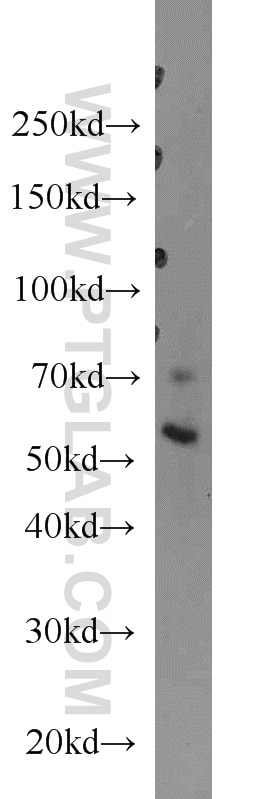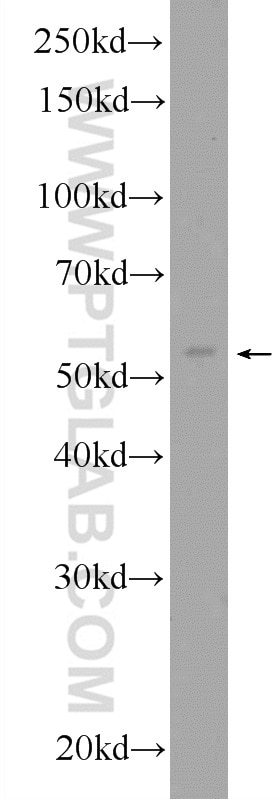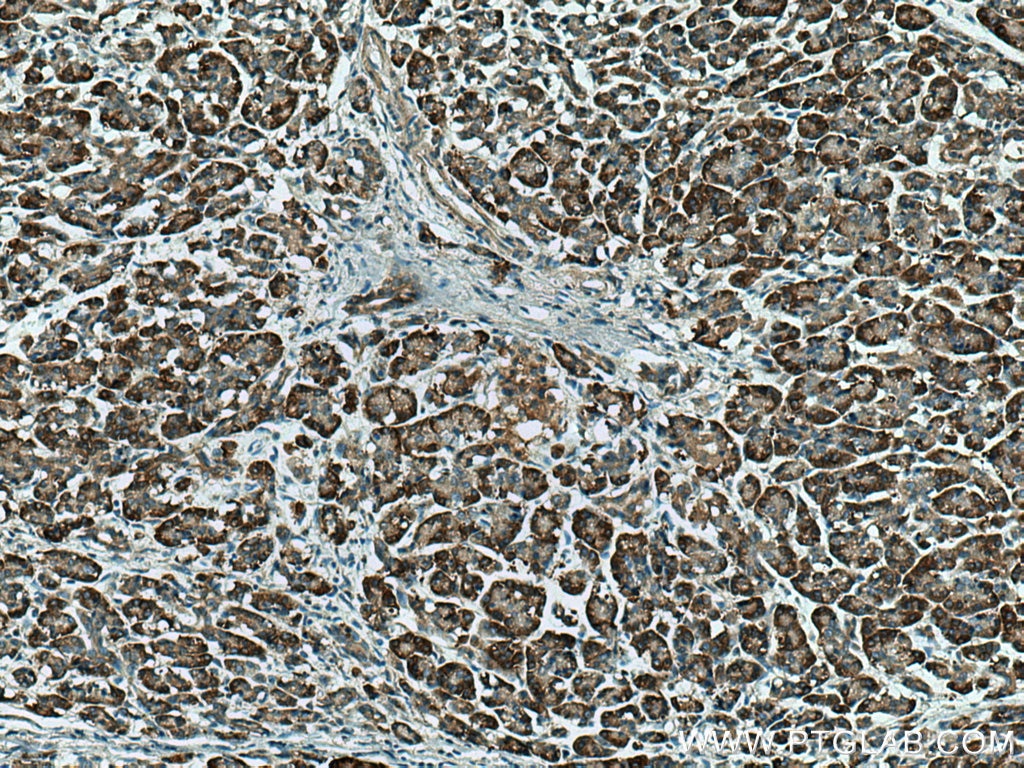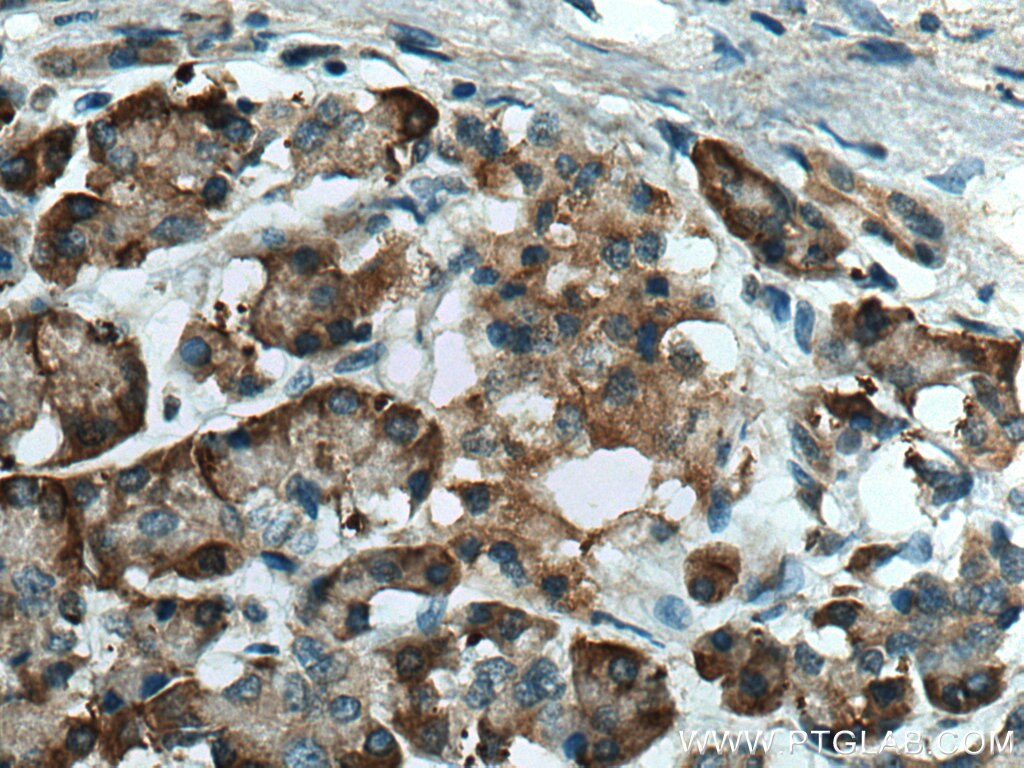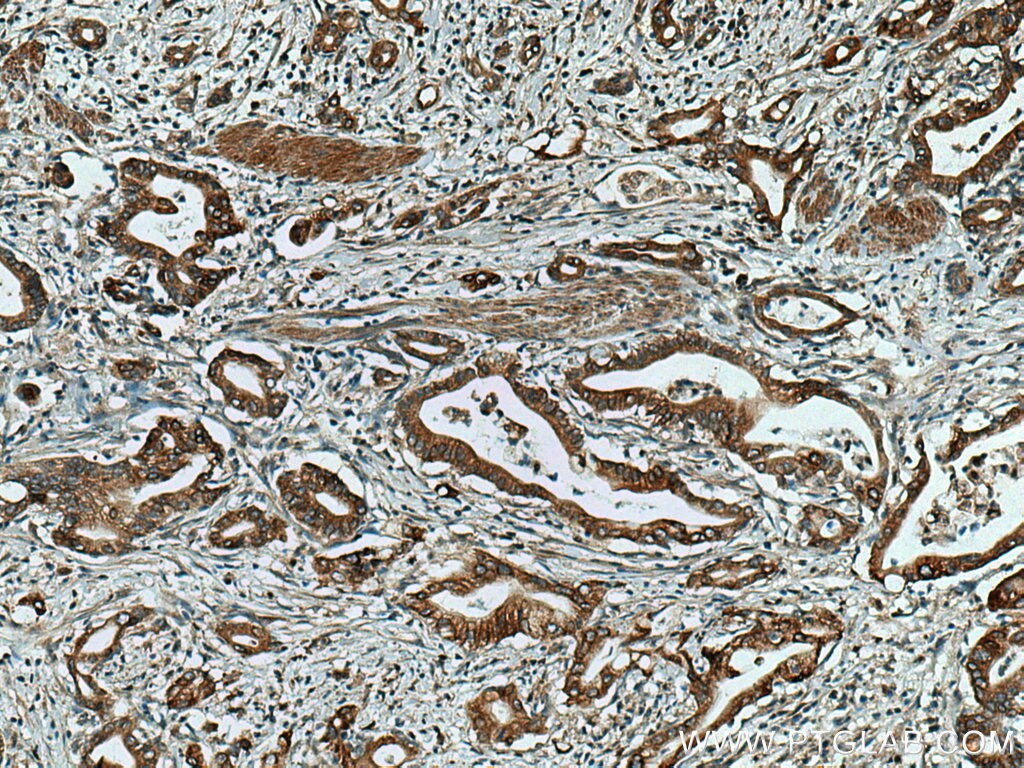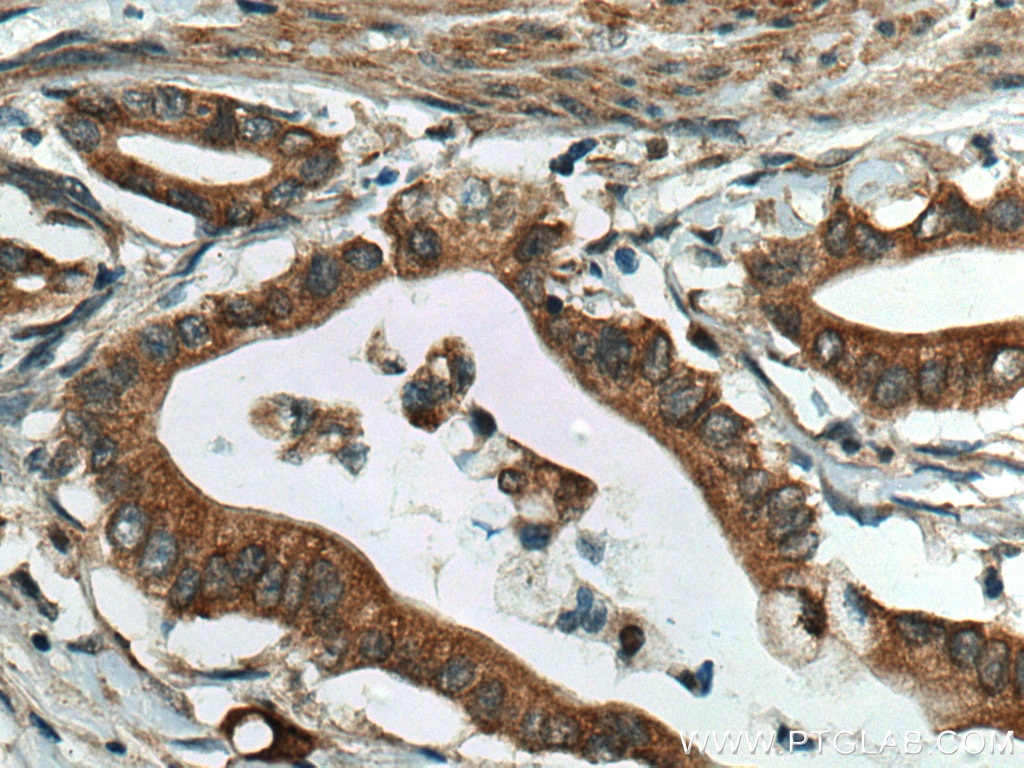Anticorps Polyclonal de lapin anti-ERO1L
ERO1L Polyclonal Antibody for WB, IHC, ELISA
Hôte / Isotype
Lapin / IgG
Réactivité testée
Humain, rat, souris et plus (1)
Applications
WB, IHC, IF, ELISA
Conjugaison
Non conjugué
N° de cat : 12007-1-AP
Synonymes
Galerie de données de validation
Applications testées
| Résultats positifs en WB | tissu ovarien de souris, cellules A431 |
| Résultats positifs en IHC | tissu de cancer du pancréas humain, il est suggéré de démasquer l'antigène avec un tampon de TE buffer pH 9.0; (*) À défaut, 'le démasquage de l'antigène peut être 'effectué avec un tampon citrate pH 6,0. |
Dilution recommandée
| Application | Dilution |
|---|---|
| Western Blot (WB) | WB : 1:200-1:1000 |
| Immunohistochimie (IHC) | IHC : 1:50-1:500 |
| It is recommended that this reagent should be titrated in each testing system to obtain optimal results. | |
| Sample-dependent, check data in validation data gallery | |
Applications publiées
| WB | See 10 publications below |
| IHC | See 1 publications below |
| IF | See 1 publications below |
Informations sur le produit
12007-1-AP cible ERO1L dans les applications de WB, IHC, IF, ELISA et montre une réactivité avec des échantillons Humain, rat, souris
| Réactivité | Humain, rat, souris |
| Réactivité citée | rat, Humain, porc, souris |
| Hôte / Isotype | Lapin / IgG |
| Clonalité | Polyclonal |
| Type | Anticorps |
| Immunogène | ERO1L Protéine recombinante Ag2620 |
| Nom complet | ERO1-like (S. cerevisiae) |
| Masse moléculaire calculée | 468 aa, 54 kDa |
| Poids moléculaire observé | 54 kDa |
| Numéro d’acquisition GenBank | BC008674 |
| Symbole du gène | ERO1L |
| Identification du gène (NCBI) | 30001 |
| Conjugaison | Non conjugué |
| Forme | Liquide |
| Méthode de purification | Purification par affinité contre l'antigène |
| Tampon de stockage | PBS with 0.02% sodium azide and 50% glycerol |
| Conditions de stockage | Stocker à -20°C. Stable pendant un an après l'expédition. L'aliquotage n'est pas nécessaire pour le stockage à -20oC Les 20ul contiennent 0,1% de BSA. |
Informations générales
ERO1L, also named as ERO1-alpha, is an essential oxidoreductase that oxidizes proteins in the endoplasmic reticulum to produce disulfide bonds. It acts by oxidizing directly P4HB/PDI isomerase through a direct disulfide exchange. It does not act as a direct oxidant of folding substrate, but relies on P4HB/PDI to transfer oxidizing equivalent. Associates with ERP44 but not with GRP54, demonstrating that it does not oxidize all PDI related proteins and can discriminate between PDI and related proteins. Its reoxidation probably involves electron transfer to molecular oxygen via FAD. Glutathione may be required to regulate its activity in the endoplasmic reticulum. It may be responsible for a significant proportion of reactive oxygen species (ROS) in the cell, thereby being a source of oxidative stress. It is required for the folding of immunoglobulin proteins. Responsible for the release of the unfolded cholera toxin from reduced P4HB/PDI in case of infection by V.cholerae, thereby playing a role in retrotranslocation of the toxin. This antibody has no cross reaction to ERO1.
Protocole
| Product Specific Protocols | |
|---|---|
| WB protocol for ERO1L antibody 12007-1-AP | Download protocol |
| IHC protocol for ERO1L antibody 12007-1-AP | Download protocol |
| FC protocol for ERO1L antibody 12007-1-AP | Download protocol |
| Standard Protocols | |
|---|---|
| Click here to view our Standard Protocols |
Publications
| Species | Application | Title |
|---|---|---|
Cancers (Basel) ER Stress Response and Induction of Apoptosis in Malignant Pleural Mesothelioma: The Achilles Heel Targeted by the Anticancer Ruthenium Drug BOLD-100 | ||
Cell Calcium Mannan-binding lectin deficiency augments hepatic endoplasmic reticulum stress through IP3R-controlled calcium release. | ||
J Virol Porcine circovirus 2 manipulates PERK-ERO1α axis of endoplasmic reticulum in favor of its replication by derepressing viral DNA from HMGB1 sequestration within nuclei. | ||
J Toxicol Oxidative Stress and the ER Stress Response in a Murine Model for Early-Stage Alcoholic Liver Disease. | ||
Transplantation Protective Effect of Calpain Inhibition During Cold Ischemia on Ischemia-reperfusion Injury After Lung Transplantation |
